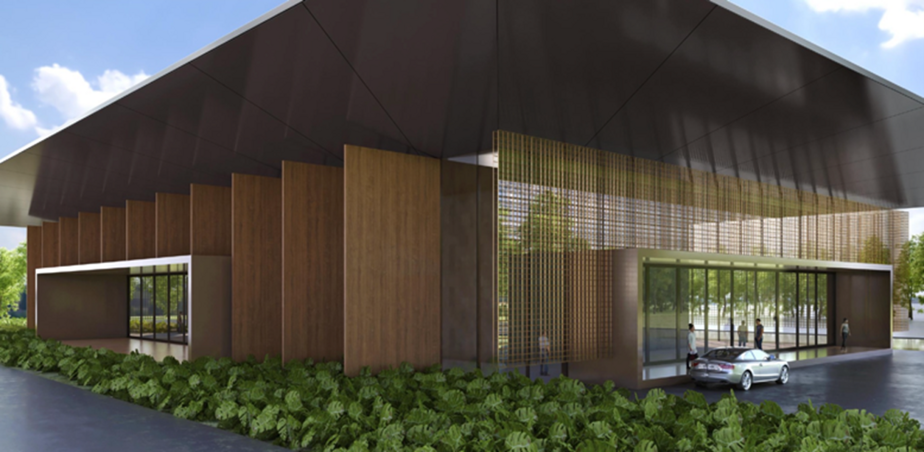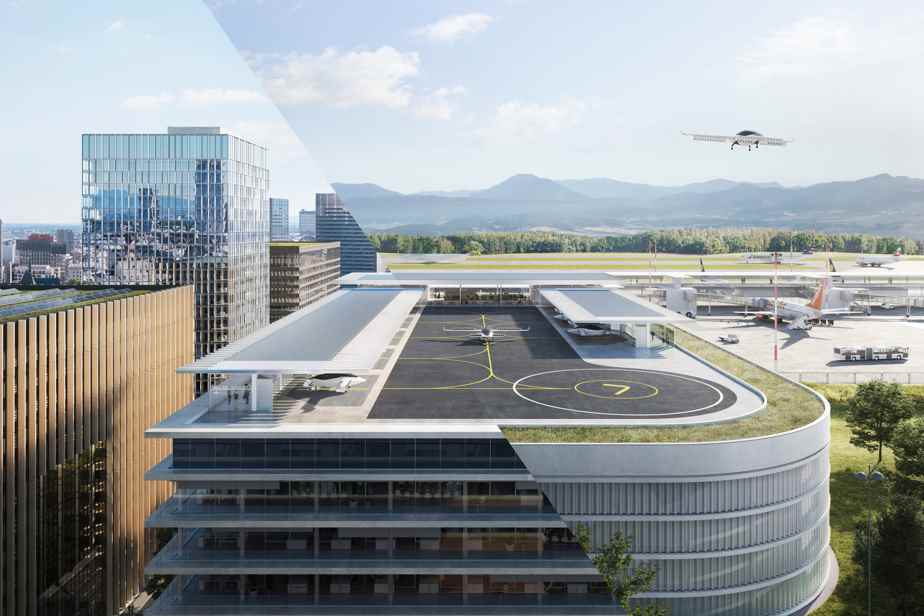The prototypes of flying taxis are multiplying, but where will they be able to take off and land if they are commercialized on a large scale? VPorts, which dreams of a network of vertiports, hopes to convince Quebec to finance it up to 350 million – a request that the Montreal company is trying to temper.
Posted at 5:00 a.m.
Nine months after its founding, the company concedes that its project raises many questions, explains its president and CEO, Fethi Chebil, in an interview with The Press. The financial requests will be adjusted to the size of the network, assures this former member of the International Civil Aviation Organization (ICAO).
“There aren’t many companies in this market around the world,” says Chebil. We are in the process of carrying out studies to determine where we could [installer] the vertiports. »
VPorts has encrypted its requests because it has just registered with the Registry of Quebec lobbyists. These are divided into two parts: a first of 50 million for the implementation of everything that will ensure the operation of the network and another of 300 million for the development of places that will accommodate possible electric vertical take-off aircraft. (eVTOL).
Many questions are still unanswered. How many places will be developed? Would they be in major urban centers or outside? Mr. Chebil did not have the details on Monday.

PHOTO PROVIDED BY VPORTS
Fethi Chebil is President and CEO of VPorts
Take this number [300 millions] with a grain of salt. We think we need 50 vertiports in Quebec. It is estimated between 4 and 6 million per [site]. Will the money come from the government or from the cities? We do not know.
Fethi Chebil, President and CEO of VPorts
The young shoot is also establishing itself elsewhere. In Brazil, it will build before operating, for 40 years, a building of approximately 55,000 square feet (5,100 square meters) at São Paulo International Airport. The site, which will open in late 2023, will host a vertiport.
First steps
Chebil says getting VPorts on the registry is a step to “start talking to governments and answering questions”.
Difficult to say if such a project should be supported by public funds, recognizes Mehran Ebrahimi, professor at the University of Quebec in Montreal (UQAM) and director of the Observatory of aeronautics and civil aviation. The question is “relevant”, says the expert.
“If we expect it to bring something back in two years, it’s a fantasy,” he says. But if it allows Quebec to position itself in a global movement that is taking shape, it may prove relevant. Obviously, we don’t have all the answers yet. »
According to its registration in the register, VPorts targets 14 municipalities – including Montreal, Quebec, Laval, Longueuil, Sherbrooke – where to take steps.
On its website, the company says it wants to build its first vertiport in the metropolis. On Monday, the City of Montreal did not respond to questions sent last week by The Press.
“Yes, there are concerns of the population and it’s normal, it’s something we don’t know,” says the company manager. We have never seen an aircraft fly yet. It is our role to explain and educate. »

ILLUSTRATION PROVIDED BY VPORTS
The company will develop a terminal with a vertiport in Brazil.
Many people are concerned about the noise level of electric vertical take-off aircraft. It oscillates between 50 and 60 decibels, according to Mr. Chebib. According to the Department of Health and Human Services, a level of 55 decibels is lower than “normal conversation” (60 dB). It is slightly beyond what is considered “inconvenience”.
VPorts is not alone in its interest in vertiports. Vertiko Mobilité, which has partnered with Jaunt Air Mobility, would like to build some as part of an aerial electric taxi project.
Many projects and questions
The vertical take-off aircraft niche is generating a lot of interest, even if it is not synonymous with success.
The Vertical Flight Society, a not-for-profit society founded in 1943 as the American Helicopter Society, has at least 350 companies – from start-ups to multinationals – looking at more than 700 aircraft concepts to vertical takeoff. In Quebec, Jaunt Air Mobility wants to assemble them in the northern suburbs of Montreal.
However, it is not tomorrow the day before that these devices will welcome passengers or that they will transport goods.
They are not yet assembled on a large scale, and regulation is still pending. The portrait is less complex on the vertiport side, according to Mr. Chebib, since the certification should be similar to what is required for a heliport.
Learn more
-
- 1500
- Although it only has about 5 employees, VPorts aims to build 1500 vertiports around the world by 2045.
Source: vports

